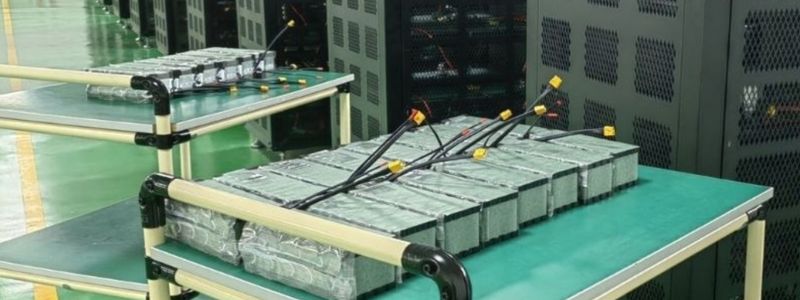Seastar Battery, a lithium battery manufacturing company based in Shenzhen, China, is known for producing high-quality deep-cycle batteries. In this article, we will delve into the key aspects of true deep-cycle batteries, including their uses, differences from car batteries, discharge levels, and the exceptional features of Seastar batteries. This information is aimed at international buyers and importers seeking reliable battery solutions.
Table of Contents
Defining True Deep-Cycle Batteries:
A true deep-cycle battery is designed to endure constant discharge until it reaches the manufacturer’s recommended maximum depth of discharge. It can then be recharged and subjected to the discharge-recharge cycle repeatedly. Unlike car batteries, deep-cycle batteries are built to withstand such demanding applications, ensuring longevity and performance.

Wide Range of Applications:
Deep-cycle batteries play a crucial role in various industries and recreational activities. From powering golf carts and RVs to supporting heavy-duty equipment like forklifts and UPS systems, deep-cycle batteries are integral to keeping the world functioning smoothly. Their versatile applications make them indispensable in today’s multi-billion-dollar battery industry.

Composition and Plate Design:
Differentiating deep-cycle batteries from automotive batteries lies in the composition of their individual plates. Automotive batteries use sponge lead, a material with a high surface area optimized for quick energy flow during engine cranking. However, sponge lead is prone to rapid sulfation and lacks durability.
In contrast, most deep-cycle batteries feature flat plates or cylindrical tubes with sufficient active material thickness. These plates undergo a critical curing process to ensure they neither become brittle nor mushy. Seastar Battery takes pride in its 10-day curing period for plates, surpassing the industry standard of 1-3 days. This meticulous approach enhances the longevity and resilience of the batteries.
Secure Interconnections:
Deep-cycle batteries consist of multiple 2-volt cells interconnected to achieve the desired nominal voltage (e.g., 12 volts). While conventional methods involve punching holes through plastic separators and bolting the cells, Seastar Battery employs an innovative technique called over-the-partition (OTP) interconnection. OTP welds link the cells without stressing them against the plastic partition, allowing for upward movement and minimizing the risk of dropped cells.
Importance of Battery Cases:
The battery case is a critical component that significantly impacts overall battery performance. Older battery cases made of rubber prompted the recommendation of not placing batteries directly on concrete, but modern cases have evolved. Automotive and some deep-cycle batteries often employ polypropylene (PPO) cases, which are not puncture resistant and vulnerable to heat-related failures. PPO cases can also experience moisture loss when valves open frequently.
Seastar Battery addresses these issues by utilizing ABS plastic cases. The epoxy seal between the lid and ABS case ensures robust security, preventing lid removal without tools. ABS cases are highly resistant to drops and punctures, offering exceptional durability. Moreover, higher psi settings on the valves reduce moisture loss, enhancing the battery’s lifespan.
Dispelling Discharge Myths:
There is a common misconception that deep-cycle batteries should not be discharged beyond 50% of their rated capacity. While it is advisable to follow manufacturers’ recommendations, reputable brands often allow discharge levels of at least 80% without compromising battery life. Seastar Battery goes even further by subjecting every battery in its DC Series to rigorous life cycle testing, guaranteeing their ability to withstand a 100% depth of discharge (DoD) without performance degradation.
Additional Features:
Seastar Battery’s commitment to excellence is evident in various aspects of its deep-cycle batteries. These include a remarkable 10-year design life, highly conductive brass terminals for improved efficiency and heat reduction, superior cycle life ratings, and the use of 99.994% pure lead for longer life and faster charging.
In conclusion, the true power of a deep-cycle battery lies in meticulous attention to design details, adherence to rigorous manufacturing standards, and the incorporation of high-quality components. Seastar Battery exemplifies these qualities, delivering exceptional deep-cycle batteries that cater to the needs of international buyers and importers.